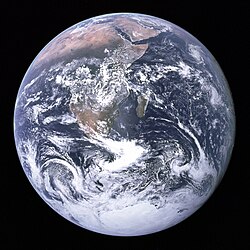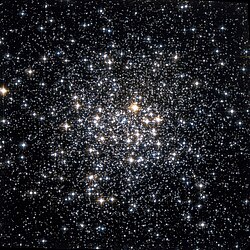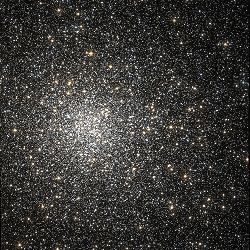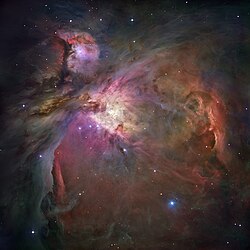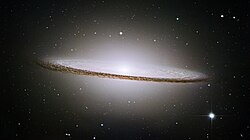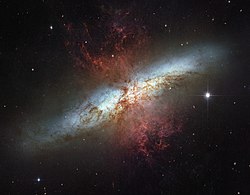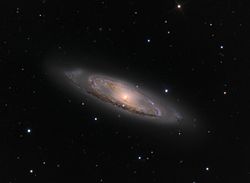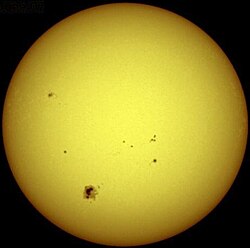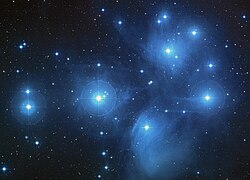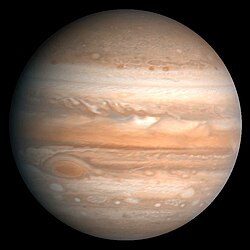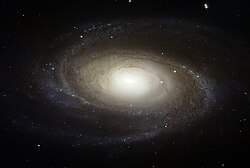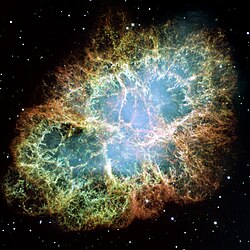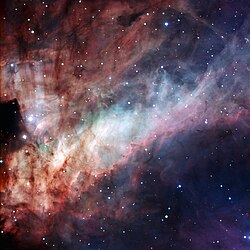A Swarm of Ancient Stars - GPN-2000-000930
| This file is in the public domain because it was created by NASA and ESA. NASA Hubble material (and ESA Hubble material prior to 2009) is copyright-free and may be freely used as in the public domain without fee, on the condition that only NASA, STScI, and/or ESA is credited as the source of the material. This license does not apply if ESA material created after 2008 or source material from other organizations is in use. The material was created for NASA by Space Telescope Science Institute under Contract NAS5-26555, or for ESA by the Hubble European Space Agency Information Centre. Copyright statement at hubblesite.org or 2008 copyright statement at spacetelescope.org. For material created by the European Space Agency on the spacetelescope.org site since 2009, use the {{ESA-Hubble}} tag. |
Relevante Bilder
Relevante Artikel
KugelsternhaufenEin Kugelsternhaufen ist ein Sternhaufen aus einer großen Zahl gravitativ aneinander gebundener Sterne, deren Dichte eine kugelsymmetrische Verteilung zeigt, indem sie vom Zentrum, wo die Sterne sehr dicht zusammenstehen, zum Rand in alle Richtungen gleichermaßen abnimmt. Typische Kugelsternhaufen enthalten mehrere hunderttausend Sterne. Die hohe Sterndichte in Zentrumsnähe führt zu gegenseitigen Bahnveränderungen, was das sphärische Erscheinungsbild zur Folge hat. .. weiterlesen
Messier 80Der Kugelsternhaufen Messier 80, kurz M80, auch NGC 6093, steht im Sternbild Skorpion. .. weiterlesen
Rare-Earth-HypotheseDie Rare-Earth-Hypothese ist die Annahme, dass das komplexe vielzellige Leben der Erde auf eine unwahrscheinliche Kombination vor allem astrophysikalischer und geologischer Voraussetzungen zurückzuführen ist. Der Begriff Rare Earth stammt aus dem im Jahr 2000 erschienenen Buch Rare Earth: Why Complex Life Is Uncommon in the Universe von Peter Ward, einem Geologen und Paläontologen, und Donald Brownlee, einem Astronomen und Astrobiologen. Der Titel der deutschen Ausgabe lautet Unsere einsame Erde: Warum komplexes Leben im Universum unwahrscheinlich ist. .. weiterlesen
Messier-KatalogDer Messier-Katalog ist eine Auflistung 110 ortsfester astronomischer Objekte, die neblig erscheinen und keine Kometen sind. Er ist der erste einer langen Reihe von Nebelkatalogen. .. weiterlesen


